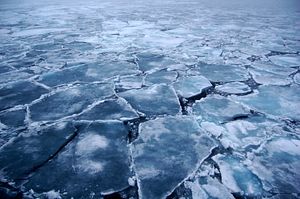According to a recent report by IHS Jane’s 360 based on official Russian sources, Russia is looking to have 14 operational airfields in the Arctic by the end of the year. Currently, Russia uses and operates four airfields. According to Russian Deputy Defense Minister Dmitry Bulgakov, an additional ten will be in place by the end of 2015, helping the Russian state better monitor and enforce its Arctic claims. Russia is a major Arctic country — the largest by population. Out of the Arctic’s total population of 4 million, up to 2 million live in Arctic Russia.
According to Jane’s, no Russian officials or state media sources have revealed the approximate location of these airfields. It would make sense for Moscow to ensure that the airfields are spaced across the entire expanse of Russian Arctic territory to allow for better aerial defense coverage of the region. The Russian military will likely use these airfields to base MiG-31 interceptors and Mil Mi-8 helicopters.
Despite its capacious non-Arctic territory, Russia has increasingly prioritized its Arctic claims primarily for the transportation and resource benefits of the region. In late 2014, Russian state media reported that a strategic military command — the Russian Arctic Joint Strategic Command — had been set up by the Russian defense ministry to help Moscow better enforce its claims to the region. In mid-December 2014, the Russian military reallocated forces from the Western, Central, and Eastern military districts of the country to the Arctic region, according to a report by ITAR-TASS, a Russian state-owned news agency.
The Russian military plans to create two new military brigades for use by a united Arctic strategic command by 2016. The addition of new air bases in 2015 will grant additional strategic flexibility for the Russian military. All of these changes are part of Russia’s Arctic doctrine, which was enunciated in 2008. Under the doctrine, Moscow will plan to field a combined-arms force, including military, border, and coast guard units, within the Arctic region of the country by 2020. In order to do so, Russia is investing heavily in Arctic militarization.
Russia isn’t unique in its Arctic interest. Other states, including Canada, Denmark, Norway, China, Japan, and the United States have also expressed interest in the region for its largely untapped natural resources and sea lanes. Due to increasing average global temperatures, Arctic sea ice is melting, allowing new northern trade routes to emerge that, in many cases, drastically reduce travel times for shipping goods in the northern hemisphere. Russia, perhaps more so than any other state, is best prepared militarily for operations in the Arctic region. Indeed, as Jane’s notes, “NATO recently warned that no other country has better prepared its forces for operations in the region.”

































